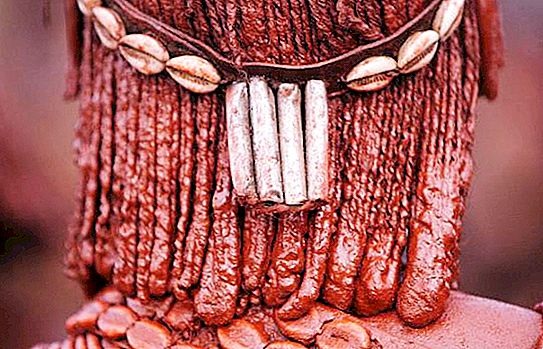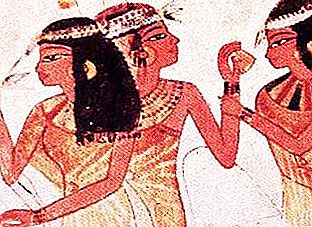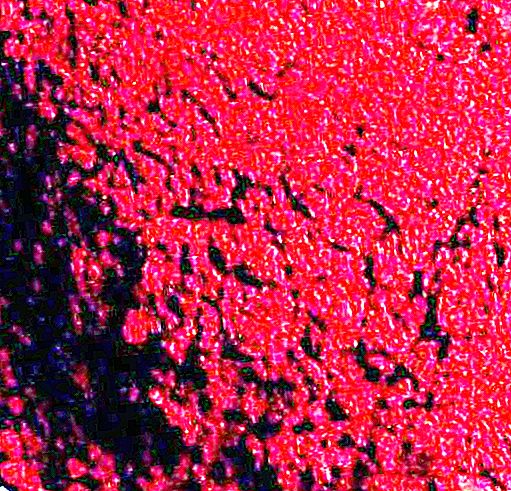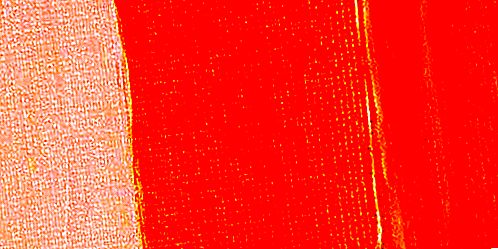Now it’s not a problem for artists to find a suitable shade of red. Most modern paints are synthetic, invented in the technical era (after the eighteenth century). But what did the ancient artists do? How many color shades were in their palette? The famous painter Titian said that it is enough for a real artist to have three colors: white, black and red. The rest of the gamut of shades is achieved by mixing these primary colors. As we see, Titian himself could not do without red. What did the ancient painters use to depict purple, pink, scarlet, burgundy? There were many natural dyes that have the color of blood in the ancient era. But the oldest of them is red ocher. What kind of mineral is it and how resistant pigment is extracted from it, read in this article.
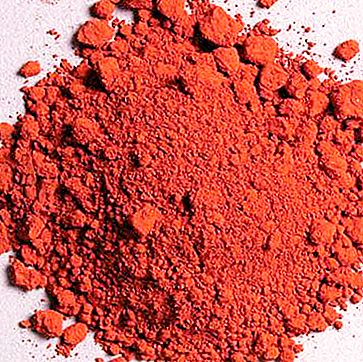
What is ocher
The name of this mineral is Greek. But this does not mean that ocher was invented or first used in Ancient Hellas. No, mineral paint is found even in the most ancient cave paintings. The ocher, as they say, was under people's feet, and for its use as a dye, no technology was needed. Picked up a pebble and draw. This natural mineral is composed of iron oxide hydrate. And the Greek word ochros means pale yellow.
How so? And where does the red ocher come from? The color of the natural mineral is really yellow. Depending on the clay, which under natural conditions is mixed with iron oxide hydrate, it varies from light beige to brownish. Yellow ocher is found in abundance in any part of the world. Therefore, it became the first paint used by the ancient Paleolithic artists.
What is red ocher
The color of blood and life has always been attractive to people. Artists wanted to portray a wounded beast in order to ensure a happy outcome of hunting by sympathetic magic. But where to get a mineral of a suitable color? In areas with active volcanic activity, anhydrous iron oxide is found. Unlike yellow hydrate, when mixed with clay it gives a warm shade of red.
The technology for producing dye, as we see, is quite simple. In places where there is no volcanic rock, just burn the yellow ocher. The water from the mineral will evaporate, and it will change color to red. Simple and inexpensive technology has led to the fact that red ocher is still widely used for the production of oil, adhesive and other paints, as well as in the manufacture of printed chintz. The harmlessness of the mineral should be mentioned. Compared to redhead and cinnabar, which also give a red color, ocher does not do any harm to the human body. Members of the Himba tribe living in Namibia cover the hair and entire body with this mineral. Ocher thus protects them from sunburn and overheating.
How in ancient Egypt they received red ocher
I must say that “color” and “essence” in this civilization were designated by one hieroglyph. The Egyptians sought to obtain a deep, rich shade in order to exalt the gods. Ocher gives warm, inexpressive tones. In search of saturation and color depth, the Egyptians became the pioneers of the first synthetic dye. True, he had a blue color. The pigment was invented in the third millennium BC. First, glass was blown out of sand with an admixture of copper. Then it was thoroughly ground into powder.
The Egyptians also aged to get a bright shade of red. And cinnabar became such a dye. The mineral was rubbed and washed thoroughly. But ocher (yellow and red) was not forgotten. It was used to give the image a natural shade. The red color for the Egyptians was twofold. On the one hand, it symbolized the blood of Osiris. Ocher and cinnabar covered the clothes of the Mother of the World, Isis. But the red color depicted dangerous demons, as well as the Apop, the threatening all living creature. But in the Ancient Kingdom, the bodies of men were usually painted with burnt ocher. This symbolized their vitality.
Shades of ocher
This pigment is still widely used due to the richness of the palette. After all, you can experiment with the degree of heating of yellow ocher, getting orange tones. The main impurity to anhydrous iron oxide - clay - also contributes to the final color. Because of it, it can be dark red ocher or light, almost pink. Between them there is still a mass of shades. The brightest ocher is Venetian red. This is a warm tone. Although red, by definition, cannot be cold, ocher gives this hue. It is very dark, almost brown. This color is called Indian or English ocher.
Looking for red
We already mentioned cinnabar. This is a very powerful, bright and deep paint. Red ocher looks rather dull compared to it. Cinnabar was obtained from processed iron ore. But the bright red color is not always appropriate in the painting.
Another competitor to the ocher was the meerk. This is lead oxide. Meerk gave a saturated red color, but it is dangerous to health. Vermilion is no less harmful. This paint was invented in China three thousand years ago. It was made by heating sulfur and mercury.
But the most expensive red was Tyrian purple. It was extracted from two species of mollusks. One snail gave only two grams of dye. Therefore, Tyrian purple covered the clothes of the emperor of the Roman Empire, and senators had the right to only one strip of paint on the toga.

